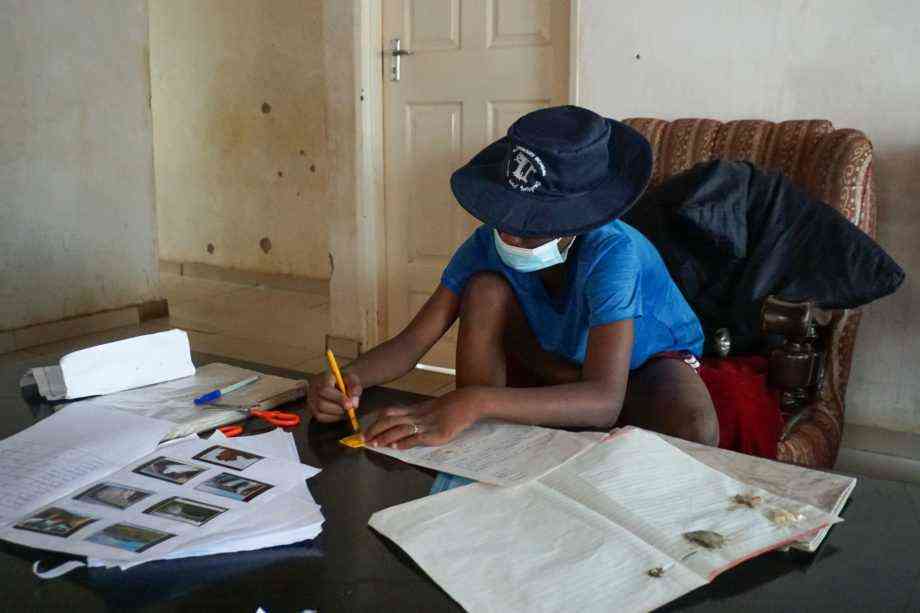
Cala, the Continuous Assessment of Learning Activities in Zimbabwe, has recently been introduced into the country, and has caused an uproar in most schools and homes.
This article examines the pros and cons of continuous assessment.
Continuous assessment means what the learner studies and learns in school is measured and evaluated regularly, let’s say whenever they have learning assignments in class, in tests, and in examinations.
Generally every teacher knows that what is learnt in class should be spoken, repeated by the pupils and then written down.
Usually the teacher is the person who first introduces what is to be taught, either through her spoken words or through looking at a textbook.
After the introduction, learners have to repeat what has been learnt.
Initially this may be only a word or two, but later each idea is explained in greater detail.
The teacher will give the class the opportunity to repeat the learning, may be without full explanation or full understanding.
- Mavhunga puts DeMbare into Chibuku quarterfinals
- Bulls to charge into Zimbabwe gold stocks
- Ndiraya concerned as goals dry up
- Letters: How solar power is transforming African farms
Keep Reading
This is normal.
The class will understand the topic, e.g. “numbers 1 – 10”. It is quite easy to repeat this, even though the class may not understand what the words actually mean.
If the teacher then asks pupils to count their fingers, this is a good activity which will enable every child to understand that she has ten fingers.
If the teacher has brought objects, such as sticks, stones toys coins, etc., and the children can count these, their understanding will be enhanced by the examples.
What would Cala involve in this case?
How can the teacher, parents and pupils understand this initial learning?
This is basically Cala.
Now we are told that the Zimbabwe Cala is “very complicated”.
It appears that Cala has not been identified in detail as under paragraph 1 above.
Firstly parents and teachers should understand Cala: in this case it involves counting 1 – 10, followed by counting different objects around them.
If this was done they would have no problem understanding Cala.
After that they would do addition and subtraction adding up to 1 – 10, all will understand 10 minus 1 is 9, 10 – 5 is 5.
The children can utilise their fingers, sticks, stones, etc to work out these sums.
Then the teacher will introduce multiplication and division, e.g. 10 divided by two, 10 divided by five, etc., still using sticks and stones or whatever physical materials can be utilised in class which the pupils can handle to support their learning.
Why should parents and teachers have any problems with such learning and its evaluation?
If this was carefully explained to parents and pupils, they could very well help their children to revise this learning.
However, it appears that teachers are expected to obtain a copy of the syllabus and notes by themselves, which it seems are difficult to get, probably too expensive, and not available in small towns and rural areas.
So the teachers don’t understand Cala.
Also it seems Cala has not been worked out syllabus by syllabus, and many schools do not have the latest syllabuses nor the latest textbooks.
They are supposed to buy them.
Secondly there may be a shortage of the new textbooks, very beautiful and expensive, US$14 for a little primary book and US$24 for a secondary book.
Schools have received copies, but since there are so expensive, children are not allowed to take them home because if lost or dirtied the school cannot replace them.
Actually, donors are providing them free of charge, and they spend more than US$85 million a year on them.
If parents are to see the exercises they may be able to help, but without being able to afford the textbooks at home they are often helpless.
Even university graduates may find the curriculum difficult to understand or to teach.
Moreover most parents did not do CALA when they were at school.
A good idea which they do not understand.
It is essential for schools to provide such examples to parents, and help parents to be able to help their children in doing their school work.
This is normally what is expected of parents everywhere, but particularly overseas, where parents have to spend often one day a week at their children’s class to get to understand what is being taught and what is being expected of the children.
In Zimbabwe, teachers and parents need to meet more regularly in order to understand what their pupils are supposed to know in each grade and each topic.
The curriculum development department is supposed to produce curricular materials for teachers.
Distributing the syllabuses is not enough: how teachers can utilise the syllabuses in different types of schools and classrooms is essential.
Most teachers are trained, but they were trained utilising the old curriculum, probably the one devised in 1983 and circulated to all schools at the time.
That is a long time ago, and copies may no longer be available.
Plus of course that syllabus is out of date.
Teachers course should be held during the holidays and at schools themselves, utilising such training materials.
Such materials should be readily available, either free or low cost.
They should be available on internet and Whatsapp.
Examinations are important, but in the colonial days there was no examination for Grade 7 or for junior certificate in European schools.
Those examinations were only for Africans.
Combined with high schools fees they were meant to remove most African pupils from continuing in primary and secondary schooling.
Thus most African men only had Grades 3 – 5 education before independence, and most women could not go to primary school as the fees were too high.
Only 4% of Africans, mainly boys, reached “O” levels.
Fees were high.
At a government secondary school in the 1960s the termly fee was the equivalent of one month’s salary for a worker, so workers could at best only afford to send one son to school a year.
In the European schools there were no fees as education was free.
Teachers were very dedicated, paid about ten times more than was paid to an African teachers.
Teachers are still demanding this salary, as they are nearly all well qualified, but the economy has not increased commensurately.
European parents were very close to their teachers, and in fact would insist on a teacher being removed if the parents thought he was not doing a good job.
Such teachers usually transferred to African Education where there was a shortage of qualified teachers.
Finally most educationists and parents think Cala is an important new intervention and should be retained.
However, there is a consensus that there has not been enough training and materials development for both teachers and parents, and this should be done as soon as possible.
*Chung was a secondary school teacher in the townships; lecturer in polytechnics and universities; teacher trainer in the liberation struggle; civil servant and UN civil servant and minister of primary and secondary education.
These weekly articles are coordinated by Lovemore Kadenge, an independent consultant, managing consultant of Zawale consultants (Private) limited, past president of the Zimbabwe Economics Society and past president of the Chartered governance & Accountancy Institute of Zimbabwe. – kadenge.zes@gmail.com and Mobile No. +263 772 382 852









